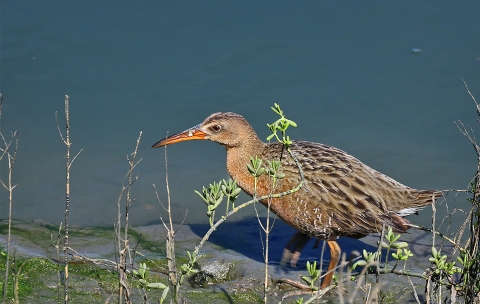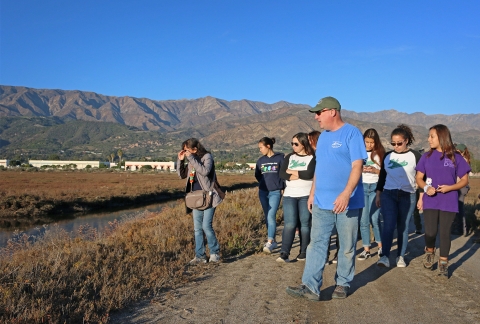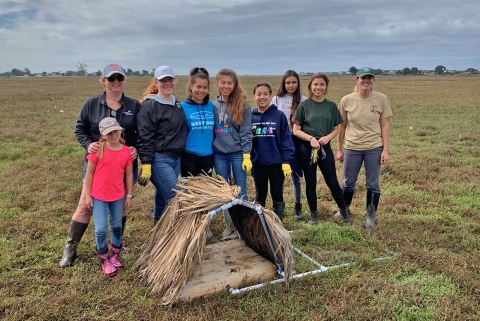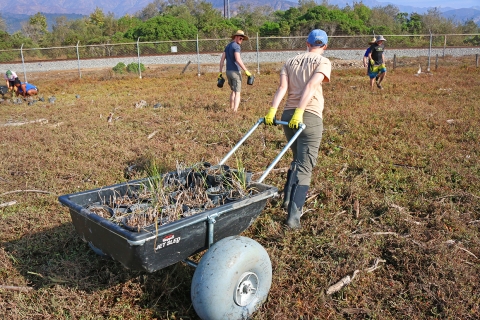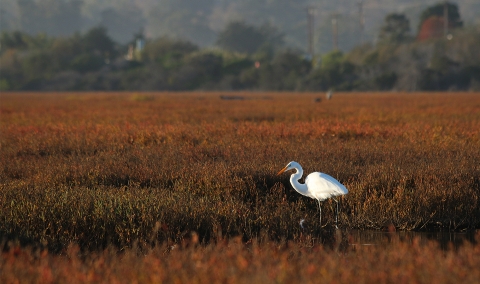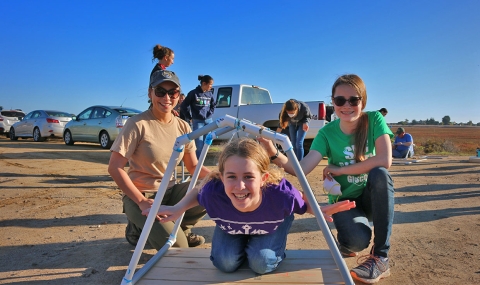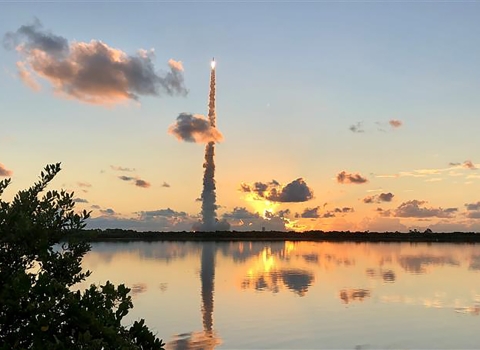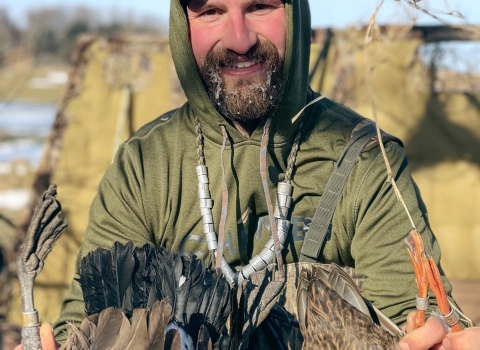By Hazel Rodriguez
“It’s a very secretive salt marsh salt marsh
Salt marshes are found in tidal areas near the coast, where freshwater mixes with saltwater.
Learn more about salt marsh bird,” said U.S. Fish and Wildlife Service Coastal Program biologist Colleen Grant. “You could be 20 feet away from them, but you'll never see them.”
The light-footed Ridgway’s rail (formerly known as light-footed clapper rail) once inhabited the wetlands that occupied California’s coast, from Santa Barbara County to San Quintin Bay in Baja California, Mexico. Today, the species ranges from southern Ventura County to Ensenada. The last sighting of the rail in Santa Barbara County’s Carpinteria Salt Marsh Reserve was in 2004.
Grant, along with Dr. Andrew Brooks, director of the University of California’s Carpinteria Salt Marsh Reserve, have been working with UC Santa Barbara students and the Girl Scouts of California’s Central Coast to build nest platforms and increase the habitat’s viability through restoration for the elusive bird.
In 1985, the marsh supported a population of about 24 breeding pairs, but habitat loss due to changes in freshwater flow and the impact of non-native predators such as house cats and the red fox caused the population to dwindle. Over time, individual birds slowly disappeared, with the last breeding pair observed in 2002.
The partnership has now planted over 480 native bulrush plants on the reserve and installed five nesting platforms made out of plywood, PVC pipes and palm fronds. Alkali bulrush is a species of sedge that creates a barrier from tidal flooding and provides wildlife with food and cover. Light-footed Ridgway’s rails have historically used the dense marsh plant for nesting and protection from predators.
“This salt marsh is the northern point of their historic range,” said Grant. “By bringing them back to Carpinteria Salt Marsh, we’re bringing them one step closer to recovery.”
Over the past 200 years, California has lost 97% of its wetland habitat. The Carpinteria Salt Marsh Reserve, part of the UC’s Natural Reserve System, represents about 3% of what remains of California’s coastal wetlands. Due to a century of draining for land use and land development, the marsh has dwindled to 230 acres.
“The Carpinteria Salt Marsh entered the Natural Reserve System in 1977 because it really was a nice example of high functioning coastal salt marsh habitat,” said Brooks. “This whole area - the 230-acre marsh that’s behind me – was actually slated to be developed into a small boat harbor.”
The acquisition of 120 acres of the marsh by the University of California, and later acquisitions of smaller parcels by the City of Carpinteria and the Land Trust for Santa Barbara County, effectively saved the entire marsh from future development.
“The mission of UC Natural Reserve System is to protect places like this so that they may be used as outdoor classrooms and for research at the university level,” added Brooks. “The reserve system is really an outdoor classroom. We actually let people manipulate things here, as long as it doesn’t do lasting damage to the ecosystem or interfere with someone else’s research.”
The marsh also serves as a birder’s paradise. Throughout the year, over 100 species of birds can be seen feeding in the serpentine channels wending through the marsh, nesting in the nearby vegetation or just resting on the sand bars, channel banks or in the shrubs and bushes. Birders will find California brown pelicans, great egrets, marsh wrens, great blue herons, sparrows and double-crested cormorants year-round.
“We’re hoping to attract a pair of rails that are flying up and down the state looking for a home,” said Brooks. “We’re making the habitat desirable.”
The collaboration of students, staff and volunteers contributed to more than 390 service hours, in hopes that Ridgway’s rails will find their way back to Carpinteria Salt Marsh Reserve.
Motion-detecting wildlife cameras were installed inside the nesting platform so biologists can monitor nest activity.
If you build it...will they come? Stay tuned.

